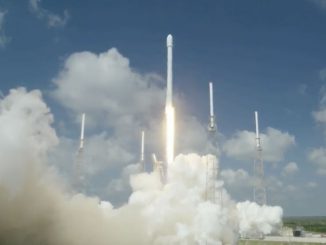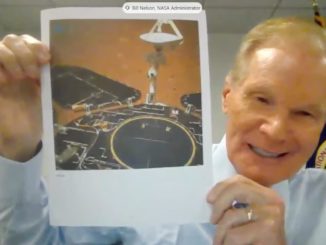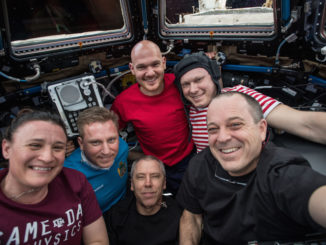
SpaceX is preparing to fly dozens of spacecraft into a Sun-synchronous orbit (SSO) during its fourth smallsat rideshare mission of the year as part of its Transporter series. The flight from Vandenberg Space Force Base in California comes a day before the Thanksgiving Day holiday in the United States.
Liftoff of the Falcon 9 rocket from Space Launch Complex 4 East is scheduled during a 57-minute window that opens at 10:19 a.m. PST (1:19 p.m. EST / 1819 UTC). The rocket will fly on a southerly trajectory upon its departure from the California coastline.
Spaceflight Now will have live coverage beginning about 30 minutes prior to liftoff.
The Transporter-15 mission follows similar flights in January, March and June. SpaceX also launched the Bandwagon-3 and -4 rideshare missions to mid-inclination low Earth orbit in April and November.
SpaceX plans to launch the mission using a veteran Falcon 9 first stage booster with the tail number B1071, one of the company’s most flown rockets with this being its 30th flight.
It previously made five missions for the National Reconnaissance Office, four previous rideshare flights (three Transporter and one Bandwagon) and NASA’s Surface Water and Ocean Topography (SWOT) mission.
About 8.5 minutes after liftoff, B1071 will perform an autonomous landing, targeting touchdown on the drone ship, ‘Of Course I Still Love You’. If successful, this will be the 165th landing on this vessel and the 540th booster landing for SpaceX to date.
The deployment sequence will begin with the Toro2 spacecraft a little more than 54 minutes after liftoff and conclude with NASA’s Realizing Rapid, Reduced-cost high-Risk Research (R5) CubeSat nearly two hours later.
Biggest mission to date
The main entity that’s manifesting payloads on the Transporter-15 mission is Exolaunch. It’s responsible for deploying 59 customer satellites during the roughly two-hour deployment sequence.
These satellites come from more than 30 customers in 16 countries including the United States, Germany, South Korea and the United Arab Emirates.

In addition to using its flight-proven deployment systems, like EXOpod Nova, CarboNIX and Quadro, it will debut its CarboNIX NEO separation system. It features “a new clamp ring system which is stronger, stiffer, can withstand higher loads and launch heavier spacecraft than any other separation system on the market.”
Exolaunch has manifested varying numbers of payloads across all of the Transporter missions since SpaceX began its Rideshare Program in 2020. To date, it has deployed more than 580 customer satellites across 39 mission using various launch vehicles, including the Falcon 9 rocket.
“We’re proud to continue our long-standing collaboration with SpaceX on Transporter-15, integrating 59 satellites for launch. This mission marks another record in Exolaunch’s rapid global growth and unmatched deployment track record,” said Jeanne Allarie, Chief Commercial and Marketing Officer at Exolaunch.
“This launch reflects both the scale we’ve achieved and the trust our customers place in us. We’re deeply grateful for their continued partnership, and to SpaceX for enabling reliable, regular access to space that makes this all possible.”
In May, Exolaunch and SpaceX agreed to new, multiyear contracts that would allow Exolaunch to manifest payloads on SpaceX rideshare flights through 2028.
🇬🇧 Exolaunch is pleased to collaborate with @SurreySat for the first time, delivering two satellites – HydroGNSS-1 & -2 – to orbit aboard @SpaceX’s #Transporter15 🛰️
Developed for @ESA, These satellites will advance our understanding of Earth’s hydrological cycle 🚀
📸: SSTL pic.twitter.com/edpLysXJaj
— Exolaunch (@Exolaunch) November 18, 2025
What’s onboard?
Among the dozens of payloads onboard are dozens of satellites for Planet Labs’ Flock Imaging constellation as well as a pair of Pelican satellites. This latest batch of 36 Flock satellites is referred to as Flock 4H.
Planet Labs’ Earth imaging constellation consists of Flock, Dove and SuperDove satellites, which began launching in 2013.
Spire, a data and analytics company, built 11 spacecraft that will hitch a ride on this mission. Those are among the 59 payloads manifested by Exolaunch.
D-Orbit also has a pair of missions flying using two ION Satellite Carrier Vehicles (SCV). The ION SCV Galactic Georgius is flying the ‘Ride With Me’ mission and will be deployed in a 510 km circular orbit. Once there, it will deploy three satellites along with hosting three additional payloads for on-orbit demonstrations.
D-Orbit’s ION SCV Stellar Stephanus meanwhile is flying the ‘We Need More Space’ mission, will deploy the European Space Agency’s (ESA) AIX-1+ satellite, the third in the AI-eXpress series and the final satellite in this first generation of spacecraft.

Another nested rideshare within Transporter-15 is the LEO Express 3 mission from Impulse Space. This will be the third flight of its Mira spacecraft and the first featuring a suite of upgrades that will allow for missions in LEO, medium Earth orbit, geostationary Earth orbit and beyond.
For the Mira spacecraft, the LEO Express 3 mission will test its new, deployable, gimbaled solar arrays, demonstrate new reaction control wheels and showcase its new propulsion system supported by an increase in propellant making it possible to achieve “900 m/s of delta-v for a 100 kg payload.”
The LEO Express 3 mission will see this Mira spacecraft deploy CubeSats for Spanish company Fossa Systems using Exolaunch’s EXOpod Nova deployment system. Mira will also host non-Earth imaging company HEO’s Holmes Mk2 NEI camera and tech demos for Samara Aerospace and Zenno Astronautics.
Varda Space Industries will also fly the fifth of its W-series spacecraft designed for on-orbit manufacturing. Once launched, Varda will have two of its vehicles on orbit for the first time. Delian Asparouhov, Varda’s president and cofounder, told Payload Space that the company has plans to launch two spacecraft simultaneously beginning in 2026.




Be the first to comment